Dickinson's American and global Mosaics are intensive, interdisciplinary, semester‐long research programs designed around ethnographic fieldwork and immersion in domestic and global communities.
Their objective is to encourage students to think reflexively about the diverse world in which they live as they engage in collaborative work with local, transnational and international communities. The Mosaics provide opportunities for students to meaningfully apply what they are learning in the classroom, both theoretically and methodologically, to the world beyond—and to bring their experiences back into the classroom.
The Mosaics challenge students to ask significant and relevant questions of the people and communities with which they are working; to actively listen to what others say about their lives and realities; to reflect on their own lives, worlds and perspectives; to design research that addresses the needs and interests of their partner communities; and finally to present what they have discovered in thoughtful, effective and ethical ways to multiple audiences.
Students learn not only how to design and conduct research but also how to produce their findings and analyses in various forms: written research papers and reports; conference presentations, video documentaries, audio podcasts and multimedia websites. The design of a specific Mosaic program is driven by pedagogical and research concerns and faculty interest and availability.
Different Mosaic models have emerged—
- A full semester of coursework taken by students with two or three faculty members from different disciplines
- Cluster courses
- One-credit course that integrates a "winterim" research trip
Examples of the different models are listed below
-
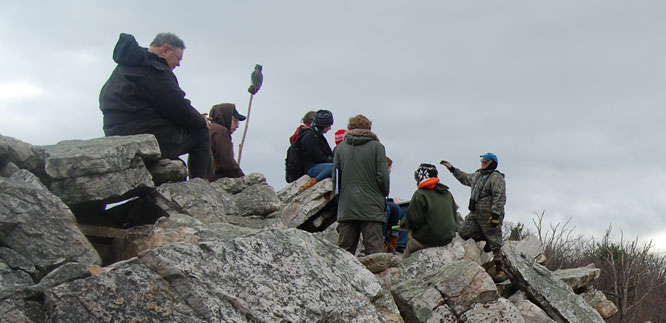
The Natural History Mosaic
-
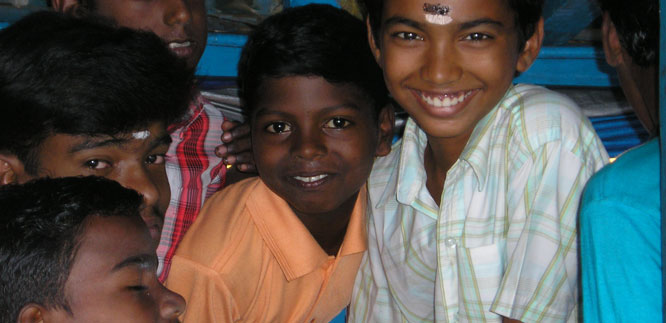
The South Asian Diaspora Mini-Mosaic
-
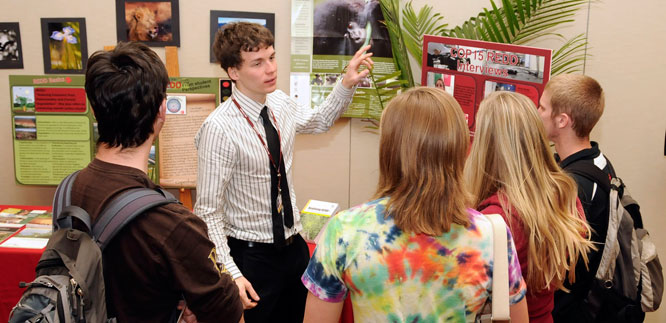
The Global Climate Change Mosaics
-
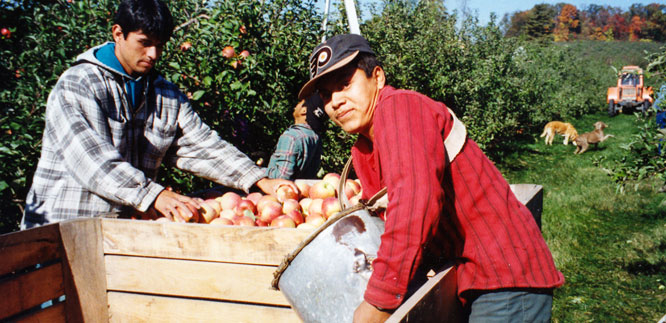
The Mexican Migration Mosaics
-

The Montserrat Mosaic
-
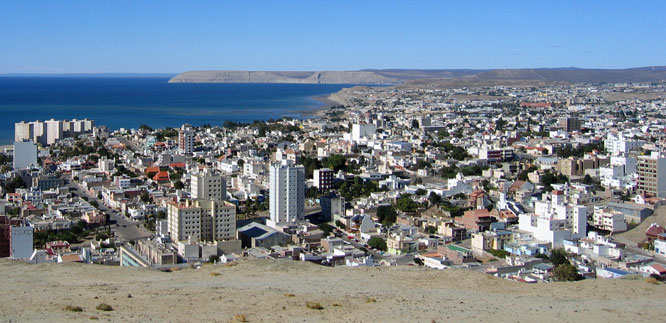
The Patagonia Mosaics
Mosaic Models
Full-Semester Mosaics: Students take all of their coursework (at Dickinson 4 credits) with 2-3 faculty*:

American Mosaic. During the 1996 Steelton Mosaic, 23 students and three faculty members met with workers, teachers, local business people, and residents of the multi-ethnic community of Steelton, Pennsylvania to explore questions of mutual interest: how to raise a family, earn a living, and sustain faith in a community hit hard by deindustrialization. This research later continued in the 2001 Steelton Mosaic with 18 students who focused on work, family, and migration narratives with members of the African-American community, and mentored young people in the elementary and secondary schools to conduct their own video-taped oral histories. (1996, Faculty: American Studies, Economics, and Sociology; 2001, Faculty: English, History, and Sociology – in both cases, the 3rd faculty member teaching literature contributed only one course to the Mosaic that was open to all students).

The Global Climate Change Africa Mosaic (2011-2012). Climate change is one of the most serious challenges to human progress and sustainable development today. The Global Climate Change Africa Mosaic offered students from all disciplines the chance to participate in, and critically examine, the process of international climate negotiations and science to prepare tomorrow's leaders for the challenges of the future. Students studied climate science, policy, and progress, South African history, politics, culture and environmental issues. The Mosaic explored the science, human and ecological consequences, policy options and international negotiations surrounding global climate change, with focused study of sub-Saharan Africa and especially South Africa. Students studied climate science, policy, and progress, South African history, politics, culture and environmental issues. The team investigated the roles, motivations, positions and effectiveness of different delegations and constituencies in the negotiations by conducting and videotaping interviews with conference delegates; observing conference proceedings; attending science and policy briefings, panels and events; and following real-time media coverage of the conference. Bringing their expertise and knowledge into practice, the course also allowed for media outreach and creation via blogging, interview techniques, social media outreach, and educational design to a variety of audiences.Program Dates: Fall 2011 on campus (3 1/2 credits), January 2012 ••• credit
COP17 Study Abroad: UN Climate Change Conference, Durban, South Africa (Dec)
Program Sites: Dickinson College Campus and Durban, South Africa.

The Mexican Migration Mosaics. The 1998 Mexican Mosaic focused on migrant labor in Adams County, Pennsylvania, just South of Carlisle. The 2003 Mexican Migration Mosaic worked with communities in Adams County, Pennsylvania and Peribán in Michoacán, Mexico-communities which lie on opposite ends of the continent, but stand closely connected through family, work and circular migration. Through intensive fieldwork and internships, students came to better understand the economy and culture, living and labor conditions, and lives of people in both regions. Students had the opportunity to pick apples in the Adams County orchards, visit migrant worker camps, teach ESL in school classes and after-school programs, intern in migrant Head start programs and day care centers, work with health clinics, and interview growers and advocacy groups in Adams County. In Peribán, students were involved in ethnographic fieldwork and interviewing families of migrant workers and people who have settled in Adams County. Both were full-semester Mosaics involving 18 and 23 students respectively taking 4 courses with either 2 - 3 faculty. (Faculty 1998, Anthropology and American Studies; 2001, Anthropology, History, and Sociology; coursework counted in Latin American Studies, Spanish, History, Anthropology, Sociology, and American Studies).

The Comparative Black Liberation Movements Mosaic (2008) mosaic examined two of the most internationally significant Black Liberation Movements of the 20th century: the anti-apartheid movement in South Africa from the 1950s through the 1990s, and the African-American civil rights movement of the 1950s-1980s. Mosaic participants conducted field research in South Africa and Coahoma County, Mississippi with their local counterparts. Their research, primarily conducted through the collection of oral histories, explored how African and African-American people in small communities responded to and eventually defeated white supremacy in two of its most infamous manifestations: apartheid South Africa and Jim Crow Mississippi. Students took all of their coursework with 2 core faculty (one a South African historian and the other an African-American historian) and a third who taught a course on Protest and Liberation Music. The Mosaic started at the end of July-August in South Africa; the 8 students then returned to campus for the fall and spent 3 weeks in Mississippi in November. Atandi Anyona '10 and Ryan Koons '10 created an audio file entitled "Because as long as you live, you're going to have some blues" during their mosaic experience. (Faculty represented History and Music; coursework counted in History, Music, Africana Studies, Sociology, Anthropology, American Studies).

The Natural History Mosaic (2012) (2016) This Mosaic exposed students to the wide range of ways to study the natural world. From in-class lectures and labs, through extensive field work, to careful museum visits and study, students were exposed to a multi-disciplinary and interdisciplinary set of questions and provisional answers. The Mosaic included trips to several Pennsylvania museums and to the Smithsonian Institution's National Museum of Natural History in Washington, D.C. In the field, there were an array of outings in and around Pennsylvania, such as observing the management of the state's elk herd at close range, participating in the North American saw-whet owl-banding project and trapping turtles to study populations. (Faculty represented in Earth Sciences, Biology, and English; coursework counted in Biology/Environmental Science, Earth Science, a "W" for the writing course, and an independent study/research).

The Mediterranean Migration Mosaic (2013) (2016) These Mosaics focused on migrations between Morocco, France, Spain, and Italy exploring the multiple and interacting identities embodied by individuals, communities, regions, and the nation-state. We examined the creation of transnational communities, ethnic and religious tensions and cooperation, philosophical orientations to diversity, and social policy. Through oral histories, ethnographic, and survey research, multi-lingual research teams explored these dynamic interactions with a focus on labor and family migrations. Faculty: Susan Rose (Sociology and Community Studies Center), Marcelo Borges (History), Nicoletta Marini-Maio (Italian and Film Studies).
One-Course, Globally Integrated Mosaics with Winterim Research Trip (students pay a comprehensive program fee that covers expenses, eligible for financial aid):

From Kyoto to Copenhagen, Negotiating the Future of the Planet dickinsoncop15.weebly.com 16 Days in Copenhagen + 15 Students =1 Big Impact A Unique Integration of Theory and Practice.
National governments that are parties to the United Nations Framework Convention on Climate Change (UNFCCC) are engaged in intensive negotiations leading up to the 15th Conference of the Parties (COP-15) to the UNFCCC, which will be held in Copenhagen in December 2009. The intended outcome of COP-15 is a new climate change treaty to replace the Kyoto Protocol, which would represent a key turning point for global environmental governance. Students in the course will function as a research team, the Dickinson K2C Research Team, to investigate the objectives of selected parties in the negotiations, the positions of these parties on key issues, and factors that shape their objectives and positions.

The Patagonia Mosaics (2001) (2003) (2005) examined trans-Atlantic migration, ethnic and labor relations, and community development among various ethnic groups in Comodoro Rivadavia, Argentina and the oil company towns surrounding it. Twelve students and two core faculty worked in multi-lingual research teams to examine and archive documents and photos, and conduct video-taped oral history interviews with people who lived and worked in the oil company towns owned and managed by the German, British, Dutch, and later Argentine State. The project also focused on more recent (im)migration to the area, and from neighboring countries and the NW of Argentina. One course Mosaic starting at the beginning of January and running though the spring semester (Faculty: History, Sociology; coursework counted in Latin American Studies, History, Sociology, Spanish, Anthropology, American Studies).

The Venezuela Mini-Mosaics provided a group of 19 Dickinson students both the historical background and a hands-on exposure to the new model of participatory democracy, endogenous development, and regional integration that is developing in Venezuela today. The course, “Venezuela: Democracy, Development, and the Bolivarian Revolution” focused on social issues, including poverty, education, health care, and empowerment. Readings, lectures, and films during a 1/2 credit course in the fall semester 2006 prepared students to do their own research projects in Venezuela during January 2007. In Venezuela, the students engaged in field work, oral history, and video documentary projects. To complete the second 1/2 credit course in the spring 2007, students returned to campus to integrate, analyze, and present their research (co-taught by an economist and sociologist; coursework counted in Economics, International Studies, International Business and Management, Latin American Studies, Spanish, Sociology, and Anthropology). In 2008-2009, using a similar model, the course focused on “Sustainable Agro-Ecosystems and Cooperative Movements in both Venezuela and the United States.” Thirteen students conducted comparative research that linked Dickinson College’s Organic Farm with La Alianza, a 30-year-old organic farm and food cooperative in Monte Carmelo, Venezuela. The intercambio included seed exchanges, and sharing of solar water heating installations and vermiculture techniques. (Co-taught by the Director of the Organic Farm who teaches Sustainable Agriculture and a sociologist; coursework counted in Environmental Studies, Sociology, Anthropology, and Latin American Studies). Total of one course credit with ½ credit in fall and ½ credit for winterim into spring course.

Cuba Mini-Mosaic (2012). At the beginning of the 21st century, Cuba, a small island nation (however the biggest) in the Caribbean, with a population of 11 million, is facing major challenges as it attempts to carry on and further develop its unique brand of “Third World” socialism. The course, with an integrated 10-day research trip to Cuba, examined contemporary economic and social conditions and policies, international relations, and the ramifications of the Cuban revolution of 1959. With a focus on political, economic, environmental and social sustainability, special attention was given to urban agriculture as well as to social policy related to health, education, family, youth, gender and sexuality.
Two Course Clusters and globally integrated winterim trip:

The Montserrat Mosaic (2005) focused on individual and collective trauma and the geology of cataclysmic events. Volcanic activity has devastated parts of the island and dislocated one-third of the island’s population. This Mosaic involved a (two-course cluster that began with a globally integrated research field study on the island of Montserrat in January. The 16 students and two faculty then returned to campus to complete coursework in Geology (a lab science) and sociology (for a total of 30 course credits). (Faculty: Geology and Sociology).

South Asian Diaspora mini-Mosaic (2009) combined fieldwork and oral history research with the South Asian communities in Central Pennsylvania. The research focused on religion, family, work and migration narratives.
Find out more about past American & Global Mosaics, apply or learn more about requirements for students for current mosaics, develop your own mosaic as a faculty/staff member, or request more information.
You can also view Community Studies and Mosaics documentaries.
Community Studies and Mosaics Videos
Community Studies and Mosaics has produced many videos that can be seen on our youtube site. Below is a sample of the videos: